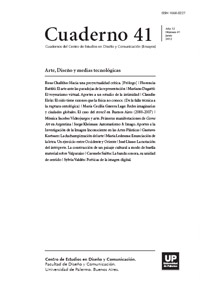El oído tiene razones que la física no conoce. (De la falla técnica a la ruptura ontológica)
Abstract
The present article describes how Pierre Schaeffer, from a technical fault and a fortuitous discovery, was forced not only to discuss with the musical acoustics of the age, but also to establish the bases to include studies in the sound within the paradigm of the complexity. From the analysis of the “Treatise on Musical Objects” it is tried to give proof about how Pierre Schaeffer confronts with reductonist thesis; with the simplifying visions about chance and with the thought that it is based on the subject-object disjunction. In addition to the hypothesis that sustains that the theory consisting of listening to Schaeffer, can be interpreted like a semiology able to unravel the complex processes of sound and musical simbolism. Finally a “forgotten paradigm” in the work of Schaeffer is rescued: the object-structure dialectic. This dialectic estimates discontinuity and hierarchy as the basic principles of the ontology of complexity
References
Chion, M. (1999). El sonido: Música, cine y literatura... Barcelona, Bs. As., México: Paidós.
(1993). La audiovisión: Introducción a un análisis conjunto de la imagen y el sonido... Barcelona, Bs. As, México: Paidós.
(1983). Guide des objets sonores: Pierre Schaeffer et la recherche musicale. Paris: Buchet/Castel.
Hesselgren, S. (1973). El lenguaje de la arquitectura. Buenos Aires: Eudeba.
Klimovsky. G. (1994). Las desventuras del conocimiento científico: una introducción a la epistemología. Buenos Aires: A-Z editora.
Klimovsky, G. e Hidalgo, C. (1998). La inexplicable sociedad: Cuestiones de epistemología de las ciencias sociales. Buenos Aires: A-Z editora.
Roereder, J. (1997). Acústica y psicoacústica de la música. Buenos Aires: Ricordi.
Samaja, J. (2004). Epistemología y metodología: elementos para una teoría de la investigación científica. Edición ampliada. Buenos Aires: Eudeba.
(2000). Semiótica y dialéctica: Seguido de la Lógica breve de Hegel. Buenos Aires: JVE editores.
Schaeffer, P. (1998.). Tratado de los objetos musicales. Madrid: Alianza.
(1966). Traité des Objets Musicaux: essai interdisciplines. Paris. Éditions du Seuil.
(1959). ¿Qué es la música concreta? Buenos Aires: Nueva visión.
Schaeffer, P. y Reibel, G. (1998). Solfège de l’objet sonore. Paris: Buchet/Castel.
Melo, F. y Palombini, C. (2006). O objeto sonoro de Pierre Schaeffer: duas abordagens. XVI Congreso da Associação Nacional de Pesquisa es Pós-graduação em Música (ANPPOM). Brasilia. Disponible en: http://www.anppom.com.br/.../CDROM/COM/07
Morin, E. (S/F). La epistemología de la complejidad. Gazeta de antropología. Disponible en: http://www.ugr.es/~pwlac/G20_02Edgar_Morin.html (9-02-08).
Palombini, C. (1999). A música concreta revisitada. Departamento de artes da UFPr. Revistaelectónica de musicología. Disponible en: http://www.rem.ufpr.br/REMv4/vol4/art-palombini.htm (31-03-08).
Toffolo, R.B.G y Olivera, A.L.G. (2005). Uma abordagem atuacionista da tipo-morfologia de Pierre Schaeffer. Disponible en: http://www.br.geosities.com/rbgtoffolo/files/schaeffer.pdf (29-01-08).
Los autores/as que publiquen en esta revista ceden los derechos de autor y de publicación a "Cuadernos del Centro de Estudios de Diseño y Comunicación", Aceptando el registro de su trabajo bajo una licencia de atribución de Creative Commons, que permite a terceros utilizar lo publicado siempre que de el crédito pertinente a los autores y a esta revista.


